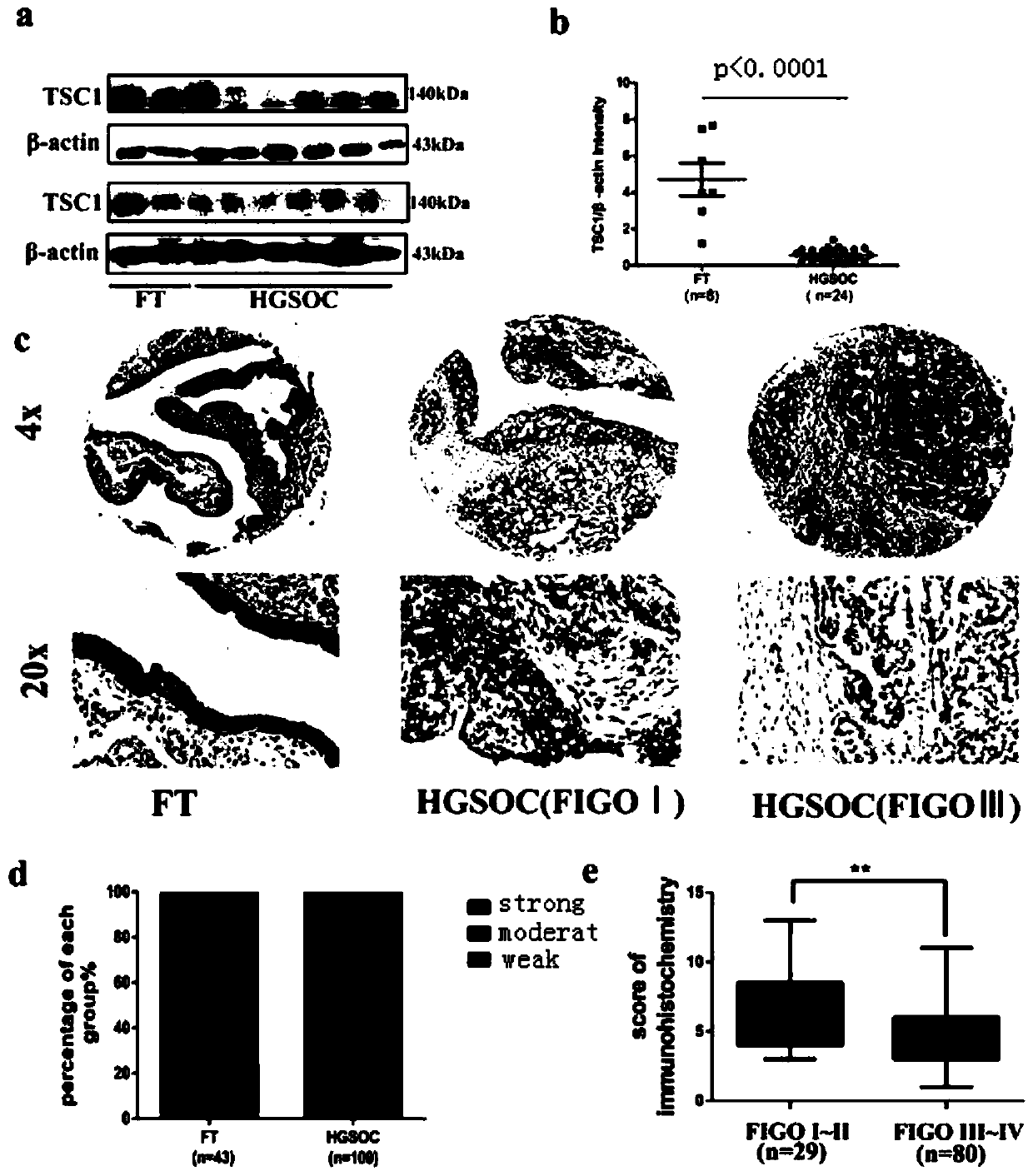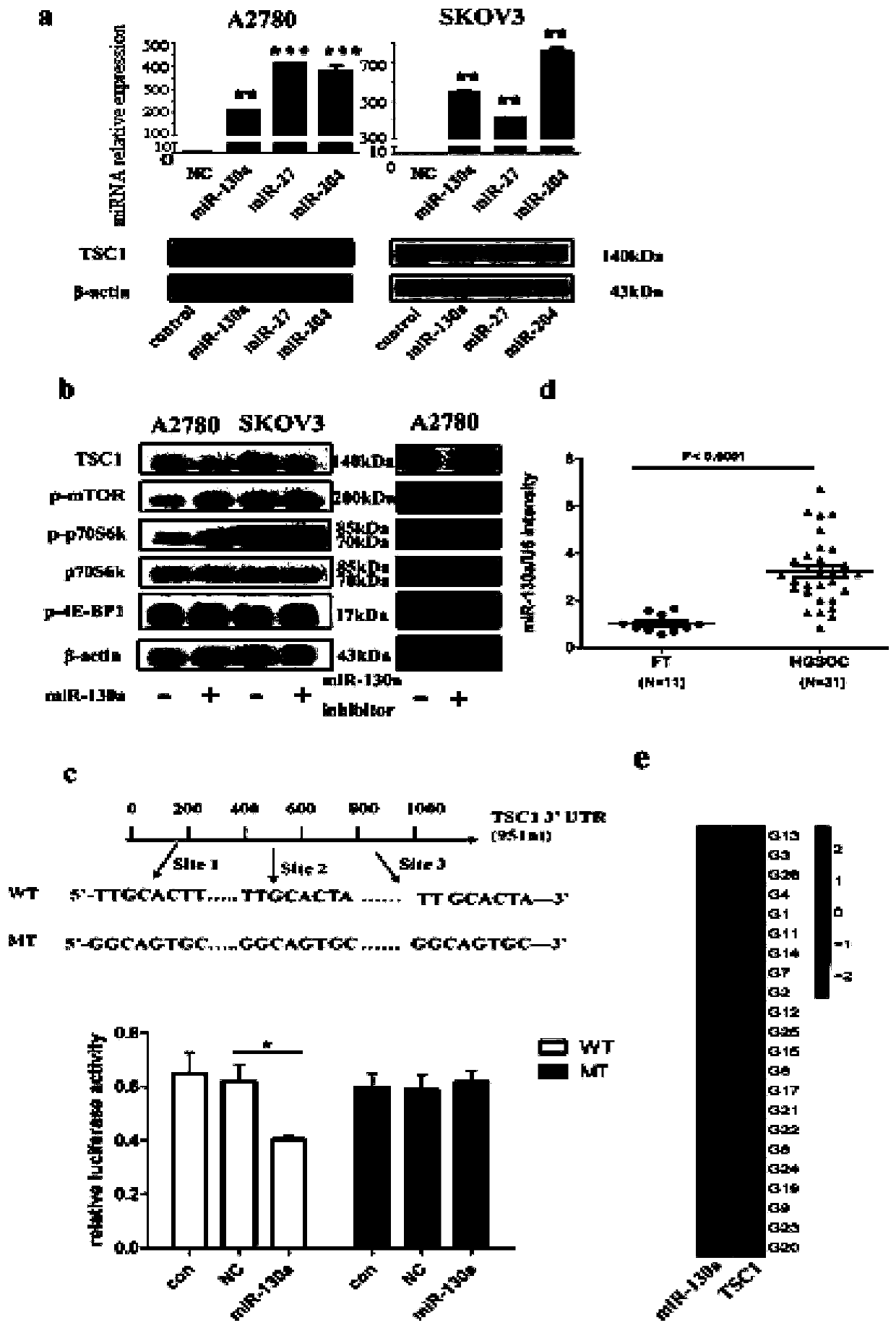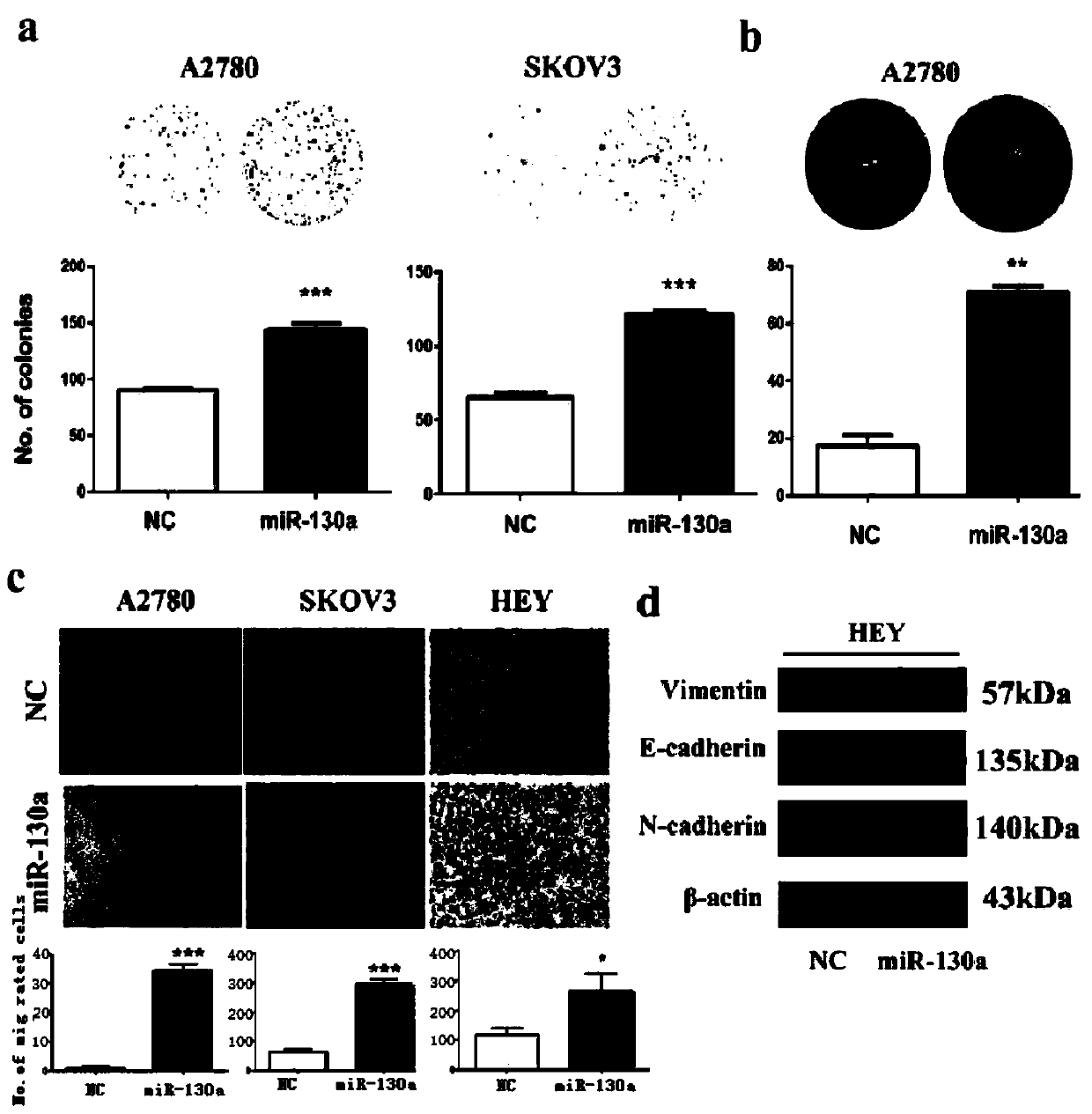Application of mir-130a in the diagnosis, treatment and prognosis of ovarian cancer
A 1. mir-130a, applied technology, applied in the field of molecular biology, can solve the problems of lack of clinical practical early diagnosis methods and treatment strategies, unclear understanding of the molecular mechanism of ovarian cancer, etc., to achieve strong targeting, promotion of proliferation and invasion. , the effect of inhibiting autophagy
- Summary
- Abstract
- Description
- Claims
- Application Information
AI Technical Summary
Problems solved by technology
Method used
Image
Examples
Embodiment 1
[0045] Example 1 Defining the role of miR-130a and TSC1 in ovarian cancer
[0046] Ovarian cancer tissues and control normal fimbria tissues were collected (both tissues were from Qilu Hospital of Shandong University, 2009-2015), and ground on ice with a tissue grinder, added protein lysate, lysed on ice for 20 minutes, and centrifuged at 12000r / min at 4°C for 15 minutes before taking In the supernatant, the protein concentration was measured by BCA method, and western blot and immunohistochemical staining were performed to detect the difference in the content of TSC1 in ovarian cancer tissues and fallopian tube fimbria. The results showed that TSC1 was low expressed in most ovarian cancer tissues ( figure 1 a), grayscale analysis shows that compared with normal fimbria tissue, the content of TSC1 in ovarian cancer tissue is lower, and there is a significant statistical difference between the two (pfigure 1 b) We then performed immunohistochemical staining on tissue chips cont...
Embodiment 2
[0047] Example 2 Determining the Targeted Regulatory Effect of Regulating miR-130a on TSC1
[0048] Expression constructs of miRNA and 3′-UTR:
[0049] miR-130a-3p, miR-27a-3p and miR-204-3p mimics and negative controls were purchased from Gemma Genomics. miR-130a-inhibitor (referring to the sequence 5'-AUGCCCUUUUAACAUUGCACUG-3', shown in SEQ ID NO: 18) and a negative control. Transiently transfected ovarian cancer cell lines, it was found that only after miR-130a was transfected, the TSC1 content decreased ( figure 2 a) At the same time, we found that the phosphorylation level of key proteins in the mTOR signaling pathway was significantly increased after miR-130a was overexpressed, indicating that miR-130a activated the mTOR signaling pathway, whereas the mTOR signaling pathway was inhibited after miR-130a was underexpressed ( figure 2 b) That is, miR-130a is positively correlated with the activation degree of mTOR signaling pathway. In order to further verify that TSC1...
Embodiment 3
[0050] Example 3 Construction of miR-130a overexpressed cell lines.
[0051] The sequence of miR-130a was ligated to the pGIPZ plasmid (commercially available), and after lentivirus packaging, it was transfected into A2780 and SKOV3 cells, and was screened with puromycin. After screening, the contents of miR-130a and TSC1 were detected by western blot and qPCR. After the cell line was successfully established, the proliferation ability of the cells was detected by the plate cloning experiment and the soft agar colony formation experiment, and the invasion ability of the cells was detected by the Transwell experiment.
[0052] 1. Construction of stable cell lines:
[0053] (1) Production of virus particles
[0054] Take Phoenix amphotropic cells in good condition, trypsinize to collect cells and count them according to 3×10 6 The density of each cell / dish is inoculated in a 100mm cell culture dish. The cell culture medium before transfection cannot contain antibiotics, and i...
PUM
 Login to View More
Login to View More Abstract
Description
Claims
Application Information
 Login to View More
Login to View More - R&D
- Intellectual Property
- Life Sciences
- Materials
- Tech Scout
- Unparalleled Data Quality
- Higher Quality Content
- 60% Fewer Hallucinations
Browse by: Latest US Patents, China's latest patents, Technical Efficacy Thesaurus, Application Domain, Technology Topic, Popular Technical Reports.
© 2025 PatSnap. All rights reserved.Legal|Privacy policy|Modern Slavery Act Transparency Statement|Sitemap|About US| Contact US: help@patsnap.com



